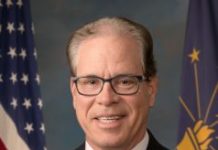“The FY 2020 Report demonstrates the tangible improvements that EPA is making across this country to help Environmental Justice communities become healthier.â€Â said EPA Administrator Andrew Wheeler. “Our focus on and commitment to these long neglected communities has improved both the environment and the physical health of countless citizens, and I am proud of that progress.â€
The FY 2020 Report describes how the Agency is working to promote a cleaner, healthier environment, more effective partnerships, and greater certainty, compliance and effectiveness to meet the needs of vulnerable communities to address disproportionate environmental impacts, health disparities and economic distress. Highlights of this work include the following:
- Provided over $160 million in grant funding to support low income and minority communities. These grants will clean up brownfield sites in communities with Opportunity Zones, reduce emissions from diesel vehicles and equipment at ports, provide environmental job training to residents of underserved communities, and address challenges faced by communities related to the pandemic.
- Deleted all or part of 27 sites from the National Priorities list for a second consecutive year, to reduce exposure to contaminants.
- Announced a new $4.3 million grant program, under the Water Infrastructure Improvements of the Nation Act, to help protect children in tribal communities from lead in drinking water by boosting lead testing in schools and childcare centers.
- Finalized rules that will make a meaningful difference to communities by ensuring that more people – particularly lower-income and minority populations – have greater access to newer, cleaner, more affordable cars, and by reducing lead dust-related risks to children in pre-1978 homes and childcare facilities where lead removal activities take place.
- Reclassified 20 communities across the country that now meet air quality standards.




